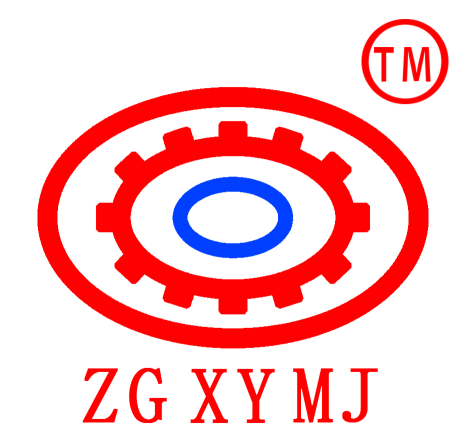Choosing the Right Tungsten Carbide Precision Ball for Your Machinery Needs
Release time:
2025-03-06
Choosing the Right Tungsten Carbide Precision Ball for Your Machinery Needs
Table of Contents
- Understanding Tungsten Carbide
- Applications of Tungsten Carbide Precision Balls
- Key Factors in Selecting Tungsten Carbide Balls
- Size and Dimension Considerations
- Hardness and Grade Level
- Surface Finish and Tolerance Standards
- Cost Effectiveness and Sourcing
- Maintenance and Longevity
- FAQs
- Conclusion
Understanding Tungsten Carbide
Tungsten carbide is a robust, durable material crafted from tungsten and carbon atoms. It is renowned for its impressive hardness, making it ideal for various industrial applications. The unique properties of tungsten carbide, including wear resistance and hardness, result from its composition, which provides superior performance compared to conventional materials. This makes it the preferred choice for precision balls used in machinery and other applications requiring high durability.
Applications of Tungsten Carbide Precision Balls
Tungsten carbide precision balls serve multiple purposes across diverse industries, including:
1. Mining and Mineral Processing
In mining operations, tungsten carbide balls are essential for crushing and grinding processes. Their durability ensures consistent performance even under extreme conditions, enhancing efficiency.
2. Aerospace and Defense
In aerospace, precision and reliability are paramount. Tungsten carbide balls are utilized in various components, including bearings and valves, contributing to the overall safety and functionality of aircraft systems.
3. Medical Devices
Tungsten carbide balls are increasingly used in medical devices due to their biocompatibility and wear resistance. Their precision ensures that medical instruments function seamlessly.
4. Automotive Industry
In the automotive sector, these precision balls are crucial for various applications, including valve systems and bearings, ensuring optimal performance and longevity.
Key Factors in Selecting Tungsten Carbide Balls
Choosing the right tungsten carbide precision ball requires careful consideration of several factors to ensure compatibility with your machinery needs.
1. Application Requirements
Understanding the specific requirements of your machinery is vital. Different applications may necessitate distinct properties, such as hardness, size, and shape.
2. Material Properties
Tungsten carbide comes in various grades with differing properties. Assess the required hardness, wear resistance, and corrosion resistance to select the most suitable grade for your application.
3. Tolerance Levels
Precision is critical in machinery applications. Consider the tolerance levels and ensure that the selected tungsten carbide balls meet the specifications required for optimal performance.
Size and Dimension Considerations
The size and dimensions of tungsten carbide precision balls play a crucial role in their performance. Here are some considerations:
1. Diameter
The diameter of the ball must align with the requirements of your machinery. Standard sizes are available, but custom sizes can be manufactured for specific applications.
2. Shape
While spherical shapes are common, some applications may require different shapes or designs. Ensure that the selected shape meets the operational needs of your machinery.
Hardness and Grade Level
The hardness of tungsten carbide balls is measured on the Rockwell scale. Higher hardness ratings generally indicate better wear resistance. Different grades, such as K30 or K40, specify the hardness and material properties. Choosing the correct grade is essential for ensuring the balls withstand the operational conditions they will face.
1. Impact Resistance
In high-impact applications, opt for tungsten carbide with enhanced toughness. This will prevent chipping and breakage during operation.
2. Wear Resistance
Select a grade that offers superior wear resistance to prolong the lifespan of the balls and minimize replacement frequency.
Surface Finish and Tolerance Standards
Surface finish can significantly affect the performance of tungsten carbide balls. A smooth surface finish reduces friction and wear, enhancing the overall efficiency of machinery. Tolerance standards ensure that the balls fit perfectly within their designated mechanisms.
1. Surface Roughness
Consider the required surface roughness for your application. A lower Ra value indicates a smoother finish, which can be crucial in certain high-precision applications.
2. Dimensional Tolerances
Tolerances should adhere to industry standards, ensuring that the balls can function effectively within their intended applications without causing operational issues.
Cost Effectiveness and Sourcing
While quality is paramount, the cost-effectiveness of tungsten carbide balls should also be a consideration.
1. Supplier Reputation
Choose reputable suppliers known for providing high-quality tungsten carbide products. Research their certifications and customer reviews to gauge their reliability.
2. Bulk Purchasing Options
If your operations require a significant number of tungsten carbide balls, inquire about bulk purchasing options that could lead to cost savings.
Maintenance and Longevity
Proper maintenance of machinery using tungsten carbide precision balls is essential to ensure their longevity and optimal performance.
1. Regular Inspections
Conduct regular inspections to identify wear and tear on the balls. Early identification of issues can prevent significant machinery failures.
2. Lubrication
Ensure proper lubrication of machinery components to minimize friction and extend the lifespan of the tungsten carbide balls.
FAQs
1. What is tungsten carbide?
Tungsten carbide is a durable material made from tungsten and carbon, known for its hardness and wear resistance.
2. What applications commonly use tungsten carbide precision balls?
They are widely used in mining, aerospace, medical devices, and the automotive industry.
3. How do I select the right size of tungsten carbide ball?
Choose a size that aligns with your machinery requirements, considering both diameter and shape.
4. What grades of tungsten carbide are available?
Common grades include K30 and K40, which refer to different hardness and material properties.
5. How can I ensure the longevity of tungsten carbide balls?
Regular inspections and proper lubrication can help extend their lifespan and maintain optimal performance.
Conclusion
Selecting the right tungsten carbide precision ball for your machinery needs is a crucial decision that can impact your operations significantly. By understanding the essential factors—such as material properties, size, hardness, surface finish, cost-effectiveness, and maintenance—you can make informed choices that enhance the performance and longevity of your machinery. Investing time in this selection process will ultimately lead to improved efficiency and reduced operational costs, ensuring that your equipment functions at its best.
Hot News

